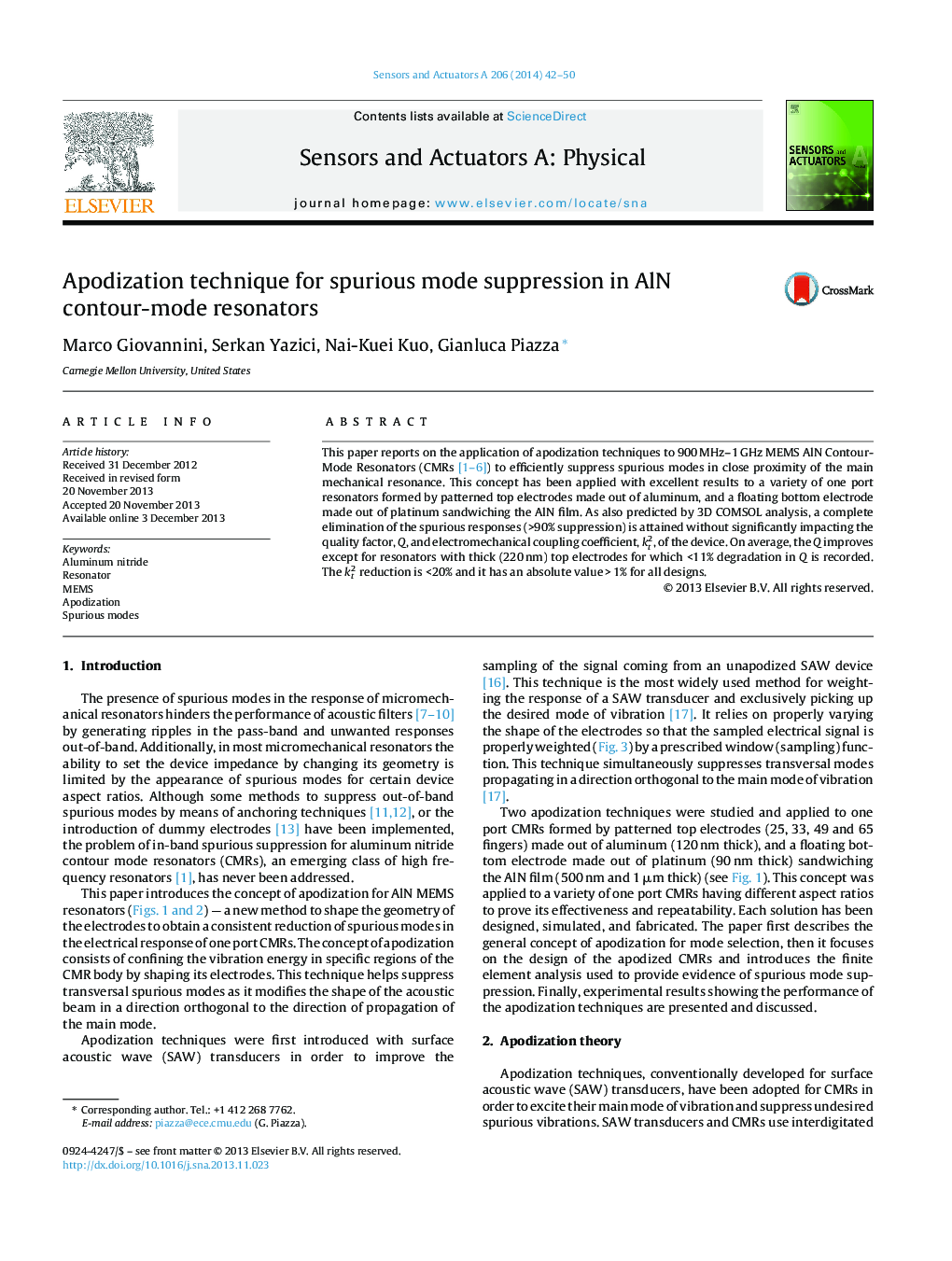| Article ID | Journal | Published Year | Pages | File Type |
|---|---|---|---|---|
| 748827 | Sensors and Actuators A: Physical | 2014 | 9 Pages |
•Use of apodization technique (i.e. electrode shaping) to suppress spurious vibrations.•Explain theory of apodization as applied to MEMS resonators.•Finite element analysis of apodization showing effective suppression of spurious vibrations.•Experimental verification of apodization in resonators formed by different AlN film thicknesses (500 nm and 1 μm) and metal electrodes.
This paper reports on the application of apodization techniques to 900 MHz–1 GHz MEMS AlN Contour-Mode Resonators (CMRs [1], [2], [3], [4], [5] and [6]) to efficiently suppress spurious modes in close proximity of the main mechanical resonance. This concept has been applied with excellent results to a variety of one port resonators formed by patterned top electrodes made out of aluminum, and a floating bottom electrode made out of platinum sandwiching the AlN film. As also predicted by 3D COMSOL analysis, a complete elimination of the spurious responses (>90% suppression) is attained without significantly impacting the quality factor, Q , and electromechanical coupling coefficient, kt2, of the device. On average, the Q improves except for resonators with thick (220 nm) top electrodes for which <11% degradation in Q is recorded. The kt2 reduction is <20% and it has an absolute value > 1% for all designs.
